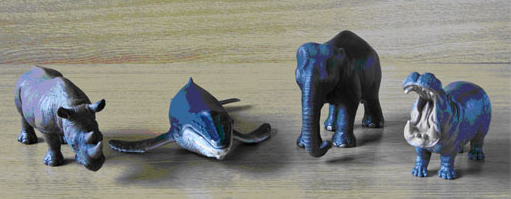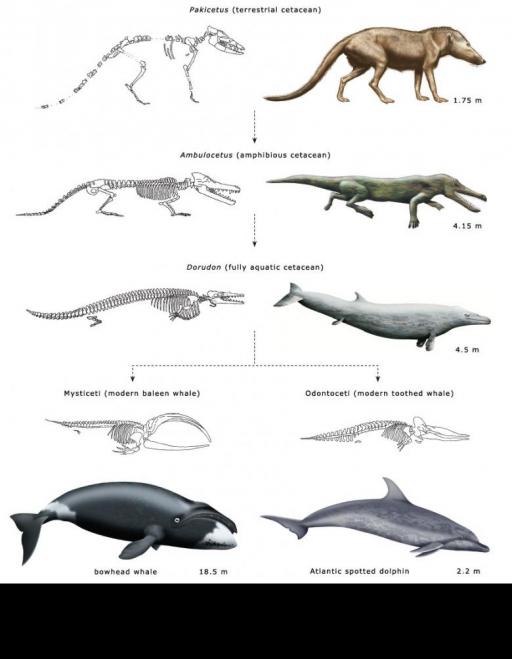2 Odd one out
The image below shows models of four mammals:
Rhinoceros
Whale
Elephant
Hippopotamus

Which of these four do you think is the ‘odd one out’? To help you to think about the differences, try answering the following two questions.
Note to teachers
This activity is more popular if model animals can be used.
SAQ 1
Question 1: Which one is most different from the others in its appearance?
Answer
The whale is the most different in outward appearance, because it has no legs whereas all the others do and it has a different body shape.
SAQ 2
Question 2: Which one lives in the most different habitat?
Answer
The whale lives in the most different habitat, as it lives in the sea and the others live on land.
You may alternatively suggest that the rhino is the ‘odd one out’ as it is the most endangered, or the elephant as it has a trunk. There can be a good argument for any answer. However, to find out which one is the most different from the others in evolutionary terms, look again at the evolutionary tree. See which branch each is on, and which one branched off first.
SAQ 3
Question 3: So, which is the odd one out in evolutionary terms?
Answer
It is the elephant which is the most different from the others in its ancestry, as it has a different evolutionary origin from the other three. (It is in the purple group in the evolutionary tree whereas the rhino, hippo and whale are all in the blue group.) The whale is more closely related to the hippo than the hippo is to the elephant, or even the rhino.
Now we will look at some fossil evidence.
Figure 2 provides a summary of the evolutionary origin of whales and dolphins.

Click on the link for a printable version of Figure 2 [Tip: hold Ctrl and click a link to open it in a new tab. (Hide tip)]
If you look closely at the skeletons of modern whales shown in Figure 2, you can see that the residual ankle bone is just still visible there.
SAQ 4
Question 4: What does this tell us?
Answer
It shows that whales evolved from creatures that did have legs. They evolved from land creatures with four legs, and gradually lost their legs and became more streamlined as they adapted to life in the sea.
Here we have seen that animals which look most similar are not necessarily the most closely related and that fossil evidence can give us clues about an animal's ancestry.
